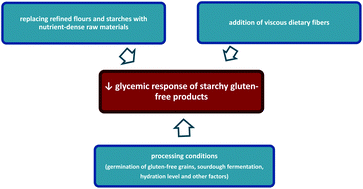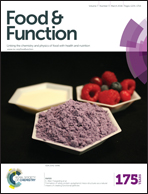Approaches to reduce the glycemic response of gluten-free products: in vivo and in vitro studies
Abstract
This article aims to discuss the current approaches used to reduce the postprandial glycemic response (GR) of starchy gluten-free products (GFP) and to provide some further prospects. The GR is evaluated through in vivo trials to determine the glycemic index (GI) and the glycemic load (GL) of foods or using the in vitro starch digestibility method to predict the GI. The reviewed studies demonstrated that a reduction in the GR of GFP can be achieved by replacing traditionally used refined flours and starches with nutrient-dense alternative raw materials due to an increase in dietary fiber, resistant starch and protein contents, which can alter the rate of starch digestion, reduce the GI and dilute the amount of available carbohydrate; both the factors contribute to reduce the GL. The addition of viscous dietary fibers could also be a successful way to reduce the GR of GFP. Some studies have demonstrated the potential of germination of GF grains and sourdough fermentation in decreasing the GR of GF bread. Further studies could evaluate alternative GF flours, soluble fibers, resistant starch, and other formulation factors that may affect the GR of different types of GFP. New studies should be performed to test and optimize processing methods by considering the reduction of GR of GFP. Another key aspect for further investigation is the confirmation of the promising results obtained through in vitro assays by in vivo GI evaluation.


 Please wait while we load your content...
Please wait while we load your content...